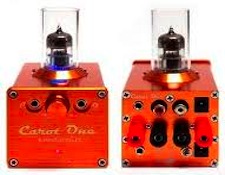It’s the time of year for saving money!

How did audio components get
to be the size they are? Blame it all on Ma Bell!
Back at the dawn of
electronics the telephone company had a problem: It had to send one specific
signal (Bill calling) to one specific line, likely to be miles away (Fred
receiving). To do that, all that was
initially necessary was a big patch bay and a lot of ladies to make the
connections. When the telephone system got so big, however, that manual
switching (Hello, Operator, please connect me to Fred Walker) became
impracticable, a system using banks of electrical relays had to be installed to
take over. Those relays (made or purchased by Western Electric, Bell
telephone’s technical and manufacturing arm), were housed in 23 inch wide “relay
racks” running floor-to-ceiling (and with as many as hundreds of racks per
facility) at telephone company switching centers in practically every major
town or city.
That was the beginning.
When radio came along, telephone
company-style racks were the obvious solution for housing its abundance of
studio and transmission electronics, and, for just that reason, much of radio’s
early equipment was built to the Western Electric 23″ standard for width and used
that company’s one-inch-based spacing for the screws to hold it in place.

The first major change of format came after General Electric
created the Radio Corporation of America (RCA) in 1919. From its very beginning,
RCA had the specific goal of dominating every aspect of radio station
technology. One of the policies it adopted toward the achievement of that goal
was, by various means, to gain control or access to the overwhelming majority
of radio and electronics-related patents. Another was to guarantee that RCA
would defend any radio station that used 100% RCA equipment against any FCC
claim of equipment-caused transmission violations. To encourage broadcasters to
conform to this 100% RCA equipment requirement, RCA introduced the 19″ inch
rack standard (with 1.75 inch hole spacing), guaranteeing that anything built
to the earlier Western Electric standard wouldn’t fit and couldn’t be used.
Because much of the equipment used in early recording studios
was taken or adapted from radio stations, the 19″ rack also became the standard
for the recording and PA (“public address” now called “sound reinforcement”)
industries and when, in the 1940s and ’50s, Avery Fisher coined the phrase
“high fidelity” and early audio enthusiasts began adapting recording studio
equipment for use in their home “HiFi” systems, 19″ sizing became the standard
for what we now know as High End audio, as well.

Radio station, recording studio, and other professional gear
was usually bolted into an equipment rack as it had been designed to be, but
although the best — or at least the most pretentious — enthusiast gear
followed the “pro” model and was set up for rack mounting, most home HiFi fans
(The term “audiophile” had been introduced by “High Fidelity” magazine, back in
1951, but most of us kids still just called ourselves “HiFi Crazies”) didn’t
have or didn’t use racks. Instead, they just stacked their system on a table or
wherever else was convenient. This was handy and impressive-looking, but,
especially with tube gear, could result in overheating problems.
Although the tweakiest of us loved the “pro” look, others
(especially those who were adults and had wives) found 19 inch wide notched
panels to be just too big and too “industrial-looking”, so somebody – even
before the claimed first use of the term “Wife Acceptance Factor” (by Gerald
Levitch, in an article called “Heard but not seen” in the “Toronto
Star”, September 3, 1989) came out with the more compact (nominally 17 inch)
width that was first adopted by some American manufacturers, and eventually
became (and stayed for many years) the standard for Japanese “mid-fi”
receivers, integrated amplifiers, cd players and other components.

That word “nominal” in the
17 inch “standard” signaled the eventual near-total collapse of what had been a
decades-long tradition of uniformly sized equipment. Following 17 inch gear
came, over the years, a whole slew of “compact” or “personal” stereo systems,
generally built around a (once again nominal) 12 inch standard. And, as things
got smaller and smaller in mainstream gear, others were getting larger at the
High End: There are now amplifiers (the big Burmester, for example) that look
as if it would take at least two strong men to move them and, in recent years,
some truly gargantuan turntables and digital media players.
Now I’m seeing another emerging trend: More and more actually
tiny gear – like the ERNESTOLO CAROT ONE, touted as the world’s smallest
audiophile Class D tube amplifier, or

The King Rex amplifier, or a number of specialized preamps ― all
of which seem to be creating a whole new size range and a whole new class of
“High Intention” (if not actually High End) products.
In addition to just size, the “shape orientation” of equipment
has changed. No longer are all audio electronics automatically laid-out as
essentially horizontal rectangles: The vertically-oriented Mark Levinson
“office building” amplifiers (following in the footsteps of earlier Stax
“gurgler” (liquid heat pump cooled) amps, and followed by products even from
such stalwarts as Nagra have changed all that and now there’s something new,
entirely: Designers are now offering products for sale that are not rectangles
at all, but more or less free-form shapes that may be of any scale at all.
There’s one amp out there that looks sort of like Seoul’s Incheon airport, and
any number of cd (or other media) players that are very beautiful as sculpture,
but that destroy, entirely, any hope of ever stacking them.
Is that good? Is it bad? Whether because of shape or just
because of widely varying sizes, the traditional audiophile “stack” seems to be
on the way out. Stackable uniform sizes came about initially because of
professional need in another industry, and, later, because a single company
wished to force sales of its own products to a professional market; neither of
those still apply.
We are left with the question, What size should a component be?





